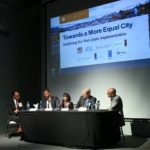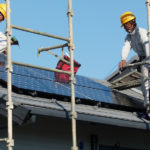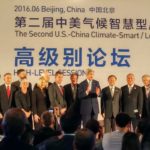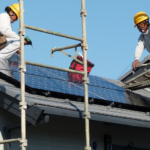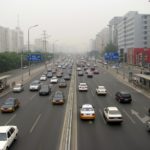Posts in the 'Energy + Climate Change' category
Habitat III officially launched today, and TheCityFix was on the ground in Quito to report on the urgent messages and announcements to emerge from Day One. Follow here for coverage of WRI’s presence. Making the New Urban Agenda Work for ...

WRI Ross Center for Sustainable Cities is reporting on Habitat III from Quito, Ecuador. Follow our daily coverage on TheCityFix. “The New Urban Agenda is about the challenge of making cities work—for the economy, for the environment, for people. It’s ...

Urban leaders from around the world are meeting in Quito, Ecuador, on October 17-20, 2016, to set the global agenda for the future of cities at the United Nations Conference on Housing and Sustainable Urban Development, known as Habitat III. ...

The WRI Ross Center for Sustainable Cities’ Sustainable and Livable Cities Initiative supports key leaders in China, India and Brazil in improving urban quality of life and environmental sustainability. WRI’s blog series on the Initiative will highlight some of the projects that ...

“If you want to win the climate change battle, it will be fought in the cities of the world,” WRI President and CEO Andrew Steer told participants at a forum on the role of urban areas in the global shift to clean ...

More than half the world’s people live in cities, and cities are responsible for more than 70 percent of all energy-related carbon dioxide emissions on Earth. These dramatic statistics mean cities have a critical role to play in addressing climate change. This ...

Low-carbon transport has many social and economic benefits that can accelerate local sustainable development and that deserve recognition beyond their role in addressing climate change. A new series of papers from the Low Emissions Development Strategies Global Partnership’s (LEDS GP) ...

An increasingly important actor on India’s urban scene could help reach the ambitious Indian goal of reaching 40 GW of rooftop solar power capacity by 2022. Meet the urban electricity “prosumer,” a consumer of electricity who also produces it and ...

Urbanization presents major challenges: congestion, sprawl, inefficiency, health hazards and high cost of living, just to name a few. But the choices we make for our cities can transform these challenges into opportunities: mobility, connectivity, economies of scale, healthier lifestyles ...

Cities are all about efficiency. It’s why they exist: to allow easy access to jobs, goods, services and ideas. However, in many countries, new and expanding cities are sprawling, car-dependent and uncoordinated – a set-up that’s not only inefficient, but ...

Bangalore is India’s third most populous city and is among the top 100 cities that contribute to the global economy. 75 percent of Bengaluru’s income is from the service sector, with over ₹ 500 billion (approximately US $7.6 billion) from ...

Good ideas that get cities results are worth replicating. Sounds simple enough. But when it comes to scaling up and investing in sustainable urban solutions, it’s complicated. With more than 400 cities making commitments to climate action through the Compact ...

Last December, Beijing’s city government issued a “red alert” for smog levels—the highest possible designation. Schools and construction sites closed, traffic was restricted, and air pollution reached 10 times the World Health Organization’s recommended limit. Meanwhile, residents in neighboring cities ...

While the words “forests” and “cities” don’t traditionally go hand in hand, urban forestry has started to bridge that gap. While some cities have minimal tree cover due to inadequate soil or a lack of space, others are nearly half ...

Lighting represents about 15 percent of global power consumption and 5 percent of worldwide greenhouse gas (GHG) emissions. Street lighting alone represents about 3 percent of world electricity consumption. Extensive programs that replace obsolete street lighting systems—incandescent, mercury vapor, and ...

Page 11 of 39« First...101112...2030...Last »









